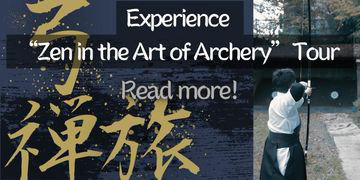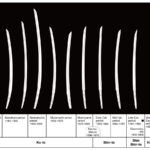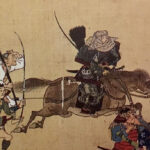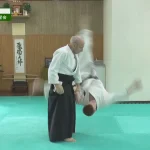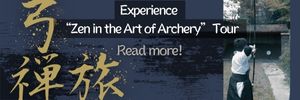Trying Jodo or the way of the jo with Amano Shihan from Joshin Kai
Author: Jessica Gerrity(Instagram/Twitter @jessintokyo)
I’m Jessica. I’ve been living in Japan for about 22 years and have been doing kyudo for about 6 of them (3rd dan) and naginata for about 1.5 years (5th kyu) I also other arts like sports yabusame and washikibajutsu (horseback archery and Japanese style equestrianism).
I find trying new martial arts very interesting as I can examine the similarities/ crossovers and differences between different disciplines which really deepens and broadens my knowledge and understanding of Japanese martial arts as a whole. The interconnectedness of various different martial arts disciplines is something I like to research. Recently I have been researching bugei juhappan or the 18 disciplines and weapons that you should historically learn in order to become a warrior long ago.
Recently I was given the opportunity to try jodo at a free training seminar for beginners. I was happy to hear that the practice was quite a close distance to where I live. It’s wonderful that free trial courses are regularly being offered to get people interested in jodo. I think it is quite accessible In comparison to say, naginata or kyudo where there are set courses for a limited number of people only once or twice a years.

My image of jodo before the training
About 1.5 years ago I had a very short 10 minute experience with jodo at the Saitama Prefectural Budokan during their annual Budo Festival. Unfortunately, this was not enough time to get much of a feeling for jodo as a whole. I found afterwards I was left with more questions than answers. I wasn’t sure what type of weapon the jo really even was? I had heard of bo (staff) in the past but was not sure of the differences between jo and bo. I was very interested to experience and learn detailed information at the upcoming beginners training.. Having an opportunity to spend two hours learning about jodo was something I was really looking forward to.
Before visiting the beginners’ training I tried to research the type of dougi or garments that jodo practitioners wear. I have seen some practitioners wear all white and others dark blue. I came to realise that Seitei Jodo(制定) or standardised jodo is under the administration of the All Japan Kendo Association and perhaps that is why most practitioners wear navy blue kendougi. I discovered jodo practitioners wear an obi under their hakama during training training as they will put the tachi/bokuto inside it as necessary. The small details like the obi are hugely interesting to me as wearing an obi during training provides me with lower back support.
In the past I noticed people in my home town of Auckland, New Zealand starting a jodo dojo under the administration of the International Kendo Federation. ( https://jodoauckland.co.nz/)
For jodo to be this worldwide and big enough that they have their own branch in Auckland City, I figured the discipline must be quite popular. Looking at the numbers of countries that participate in jodo overseas I can see that it is definitely the case. Perhaps part of the reason for this is jodo requires less equipment in order to start than compared to kyudo or kendo.
Naginata is practiced in approximately 10 countries internationally.
https://naginata.jp/english.html
Jodo is practiced in 30 countries internationally (25 are located in Europe).
http://www.marktankosich.com/path-zen-ken-ren-jodo-abbreviated-history-shindo-muso-ryu-advent-modern-offshoot/
Kyudo is practiced in approximately 47 countries internationally.
https://www.ikyf.org/ikyf_members.html]
Before I joined the practice I also thought it was important to properly understand the real purpose of learning jodo according to the Jodo Federation. Upon researching, I came to realise that it is more a defensive weapon to be used against an attack from a sword, which was an area of martial arts I have had very little experience in.
The sensei in charge of the training was Amano Hironobu Shihan. Amano Shihan has a long history with many different martial arts and teaches both Shinto Muso Ryu and Seitei Jodo. I took part in a training session on a weekend evening. Upon entering the practice hall in Saitama I was happy to see quite a large group of both men and women of different ages including university students too. I was not the only person to join the beginners training session either which put me at ease a little. I had never really noticed jodo beginners courses being advertised on social media or in my neighbourhood so I was happy to see so many people participating that night.
The opening greeting or aisatsu 挨拶, was very similar to the way my naginata practice begins. People sit seiza facing the sensei and kamiza and one person directs the greeting and introduction. I didn’t notice if there was time for mokuso or creating thoughtful goals for the practice as we have in my naginata practice, however bringing everyone together at the start of a training like they did is great as it puts all members on the same page mentally and spiritually. From the opening I got the impression that etiquette is important in Jodo like it is in kyudo and naginata too.
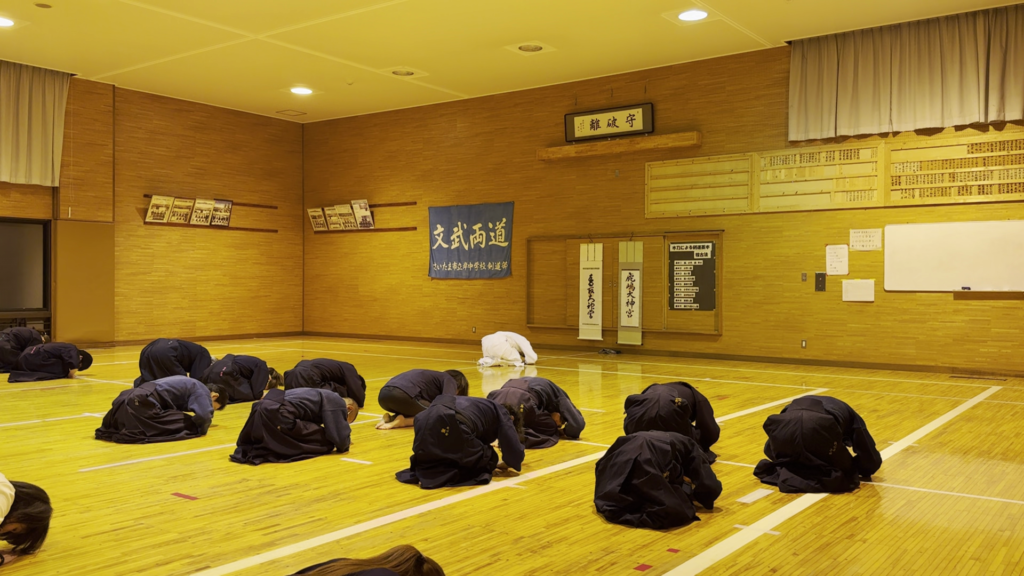
Warming up
We spent a generous portion of the lesson on warming up and connecting with our bodies.
The jodo warming up exercises were quite different to anything I have ever experienced before.
During the warm up Amano Shihan emphasised the importance of breathing correctly during training. I find this to be true with all martial arts I have had the opportunity to try and train in. Usually I concentrate so much on the movement or dousa itself I often end up forgetting to breathe, or breathe at the incorrect time.
Amano Shihan mentioned that correct breathing creates rhythm in movements and helps to focus and concentrate the mind. He discussed focussed breathing especially exhaling which at the training was loud enough to be audible. Listening to his breathing and watching his smooth movements helped me to follow along myself.
Next Amano Shihan talked about the posture and balance of our bodies for jodo. He mentioned juku or the alignment of the body when standing correctly and motioned to his body in a straight up and down line. I understood this to mean we should keep our bodies balanced in order to use our lower abdomen and core/tanden 丹田 correctly. This is true in kyudo too, we call it the sanju jumonji (三十十文字). The horizontal and vertical lines that run from the top of our head to our toes and horizontally through our shoulders. When the crosses are aligned we can shoot the bow effectively with our whole body.
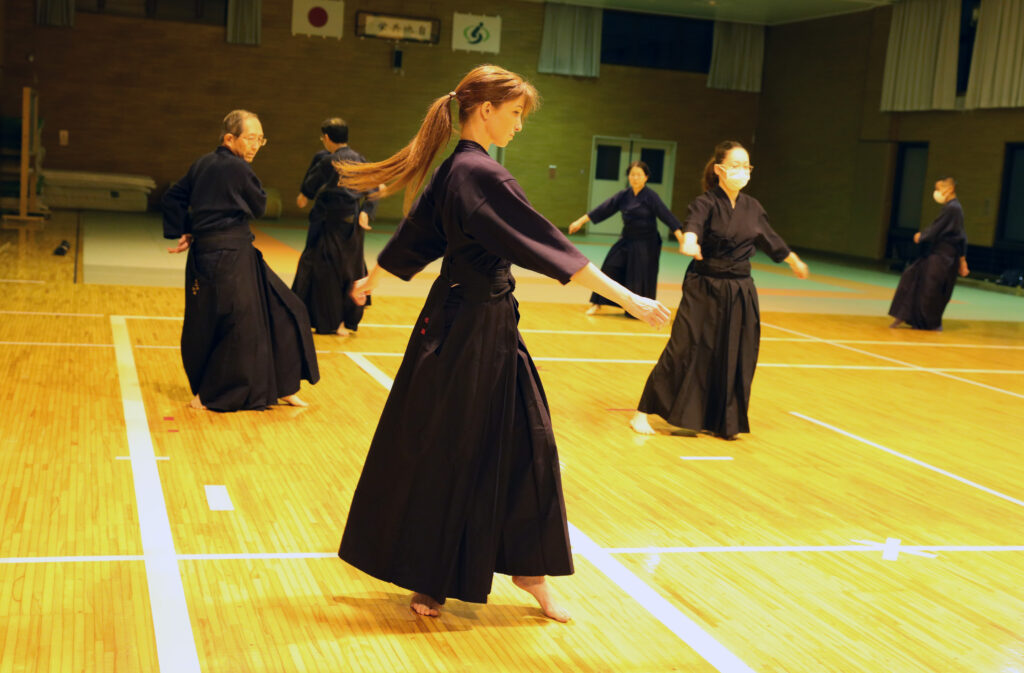
We were instructed to walk forward while exhaling and keeping our shoulders at the same height, then inhaling and bringing the back foot forward in essence walking forward. This was hugely challenging for me as I had difficulty maintaining the correct angle of my hips and back while moving. I would forget to breathe because I was concentrating so hard in coordinating my movements correctly. The balance of my bodyweight between my left and ride sides and the correct timing and muscle tension in total movement was incorrect.
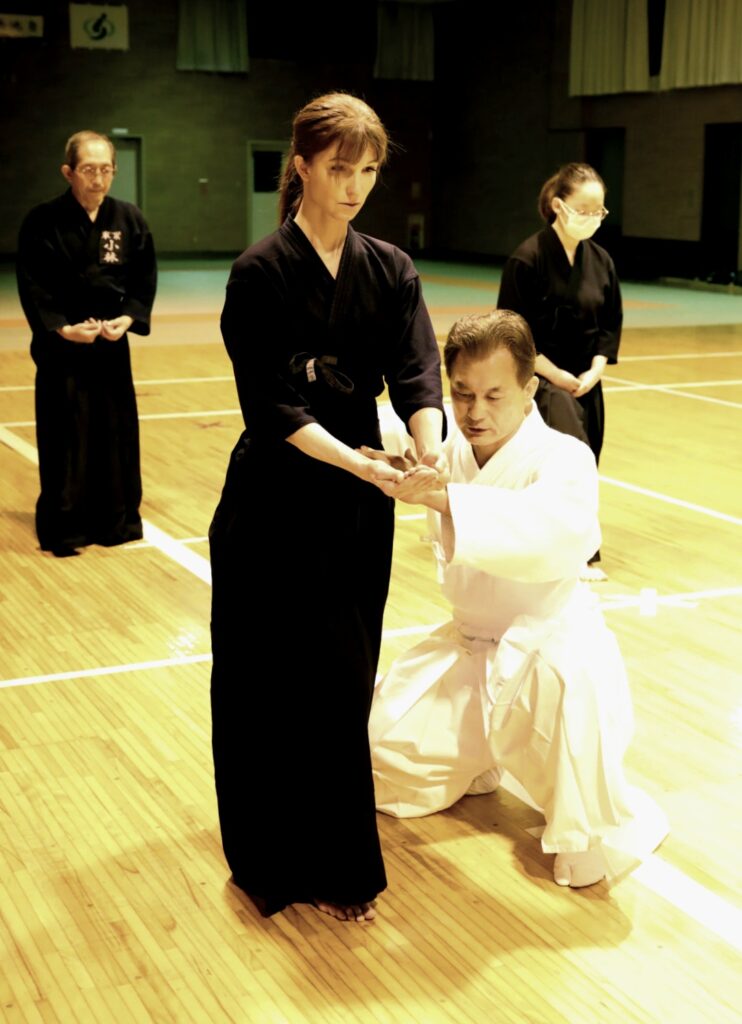
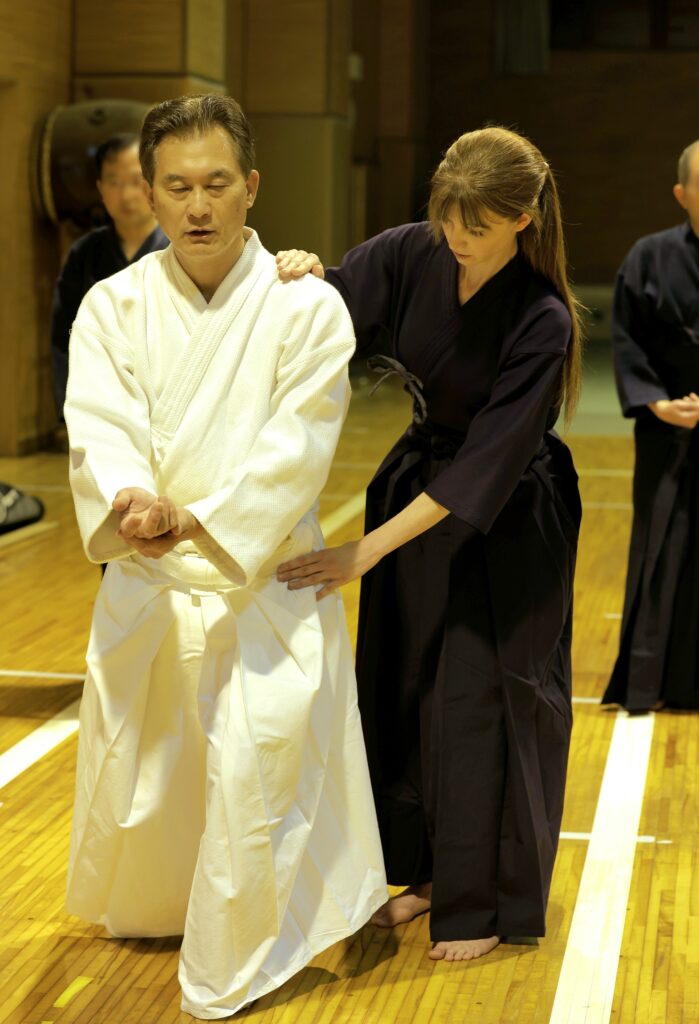
Amano Shihan took time to show me the correct way by letting me touch his shoulder and side to feel exactly where and how the tension in his body changed as he moved, he had amazing control and was very smooth. I felt Amano Shihans method of explaining was very beneficial and easy to understand for me as a first timer. I have had opportunities at my kyudo practice to touch my sensei in order to feel movement and amount of tension in the lower body and back and this method is very useful where words cannot fully explain some concepts.
He mentioned that in his experience teaching overseas he notices differences in practitioners’ body shape and skeletal structure/bone placement of non-Japanese people. When some people try to complete exercises and kata exactly like Japanese people do, they end up hurting their backs as the angle and shape of their pelvis is different.
He takes these factors into account when teaching non Japanese people as he understands there are limitations of their body in relation to their skeletal system.
Another exercise I found interesting and challenging was a variation on knee circles. We bent our knees a little and put our hands on our knees as we rotated them. The difference was that we needed to keep our shoulder and back height at the same level throughout the movement. This necessitated very good lower body dynamic muscle control and part of the way through this exercise my quads muscles became very fatigued.

Equipment
We formed a circle and were all given a jo. The jo is a circular cut stick made from white oak wood with no `blade`. Amano Shihan mentioned that the jo is typically 4 shaku 2 sun 1 bu (about 128 cm) long and 8 sun (about 2.4 cm) in diameter.
Straightaway the feeling in my hands was very interesting. A wonderful thickness to get a good grip and the circular shape felt very comfortable, not very heavy like iaito I have held in the past, but not too light either. In comparison, the naginata handle has an elliptical shape which helps us maintain the correct blade direction and angle. Jo however can be used multi directionally and the design reflects its wide range of potential uses in defense.
Amano Shihan mentioned that the length of the jo was dependent on that person’s arm span. Tall people with longer arms would use a longer length of jo. Amano Shihan was quite tall himself and his jo was the longer standard length. I was happy to hear that the jo was available in different sizes and felt it sounded similar to kyudo where the practitioners bow and arrows are relative to their arm length and height.
He explained that the jo was practiced together with an opponent using a tachi (wooden sword/bokuto) however since Seitei jodo is a kata based martial art and no bogu or protective gear is worn by practitioners. He mentioned that there are 12 kata for jodo and that we would try one of those kata during the training that night. As a kyudo practitioner I found kata based martial arts with an opponent something that took a little time to get used to. Kyudo has 8 movements hassetsu or kata which come together to create the movement for shooting one arrow from start to finish. I am always amazed at budo practitioners who have the ability to learn numerous kata in many different disciplines!
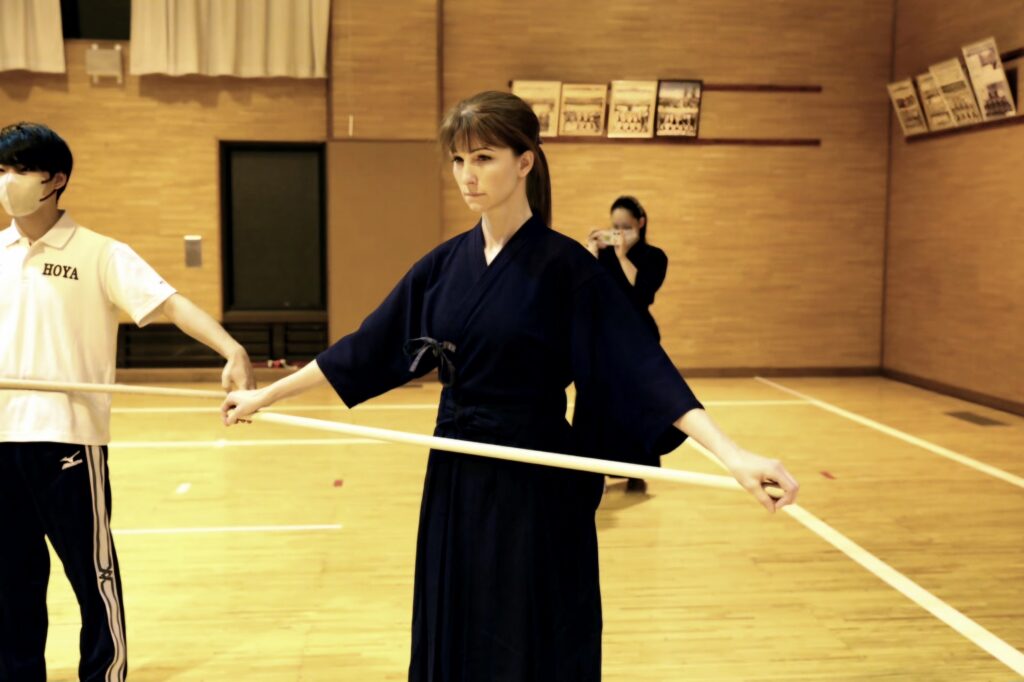
Technique
Hands: First we discussed the different ways of holding the jo. I would guess the word tenouch comes to mind as I have found many martial arts have specific and set ways to hold their weapons. Holding with palms out from the body but thumbs inside, then a variation with thumbs outside. Palms toward the practitioner and the top of the hand outwards, thumbs either in or out. Showing the end of the jo had differing meanings depending on the timing (for etiquette or for battle). Not covering the ends of the jo properly with ones hands was a faux pas and called debeso (an outie belly button) showing a part which should be kept covered. Then, during specific kata showing a little of the end of the jo on purpose to threaten and create a sense of fear in the opponent was also explained by Amano Shihan.
Legs: One big difference I noticed very early on in the training was the use of lightly bent legs as the standard stance for jodo. Having a slightly lower center of gravity and slightly bending the legs creates the type of posture that can move quickly and smoothly with power when performing kata. During the training I found myself having to purposely bend my legs during as I had reverted to my straight legged stance from kyudo. In kyudo from the lower back and waist down we make a strong and fixed stanced with our pelvis and hips, legs and feet are set and we intentionally try to connect with the ground underneath us to stabilise our shooting while our upper body is dynamic and moving smoothly.
Foot direction: I found after stepping forward with the leading foot my back foot ending position direction was very inconsistent and needed constant correction. My back foot really should have been facing a little more towards my opponent but I found my toes would angle away at 90 degrees most likely related to my naginata habits.
Amano Shihan and Kobayashi san noticed this and they suggested I stand over the top of a line on the floor to help me to be able to move forward in a straight line.

Amano Shihan discussed two main stances in jodo: yaya hanmi and ma hanmi.
The yaya hanmi stance was very interesting to learn and try. Yaya means a little or halfway and hanmi means half body/ profile. Yaya hanmi means halfway/side on or 45 degrees to your opponent. The front foot and face/head point to the front/opponent while the rear foot, hips and upper body is turned 45 degrees. This body angle was very new for me and moving forward in a straight line while in yaya hanmi proved to be quite challenging as my sense of direction while my body was at a 45 degree angle was not good. Using a line on the floor Kobayashi san and Amano Shihan took time to slowly guide me in walking straight. Ma hanmi means hips and upper body are completely side-on while your head faces the opponent. I am very much used to this stance because of my kyudo and naginata training. It feels very comfortable to move in using hanmi.
Face direction and eye contact; I noticed that eye contact is direct and very strong in jodo. During the jodo training, the practitioners look at each other very directly throughout the whole of their demonstrated kata. I understand that historically watching your opponent and their movements on a battlefield could mean the difference between life and death. Amano Shihan and Kobayashi san maintained strong eye contact during their kata demonstration and it was very powerful to watch.
After practicing kyudo for several years, the eye contact necessary for naginata was a very difficult area for me to get used to. In kyudo we don’t have a human opponent and no one to look at. Instead we have concepts of messen (eye contact) and metsukai (the gaze) and monomi (a movement with the eyes) which are all different ways of using the head, face, eye contact and gaze in our training. I was told very early on in my kyudo practice that it’s best to look at the chest area or lower throat area when a sensei or senpai is talking to you. To stare directly into their eyes can be taken as rudeness or aggressiveness.
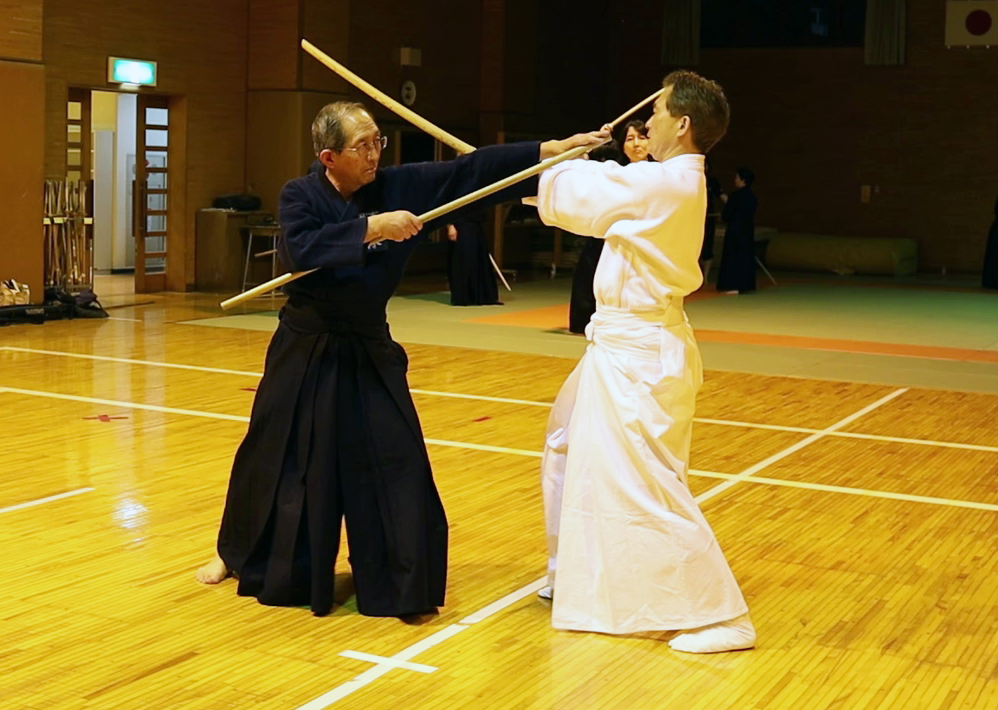
Kata
Amano Shihan and Kobayashi san performed seitai kata followed by koryu kata so that I could see the overall differences. The entry movements and ritsujo or bow with jo before performing kata for seitei jodo was very similar to naginata. Opponents bow from quite a far distance away and then come together to start their kata. The koryu kata entry/ bowing and starting movements brought Amano Shihan and Kobayashi san very close together and when I looked closely their weapons were touching. Even as someone watching from the sidelines the distance between the two practitioners during the koryu kata demonstration felt quite tense and unbreaking and direct eye contact was very powerful to watch. The flow and speed of the koryu kata demonstration was very smooth and fast compared with the seitei kata demonstration.
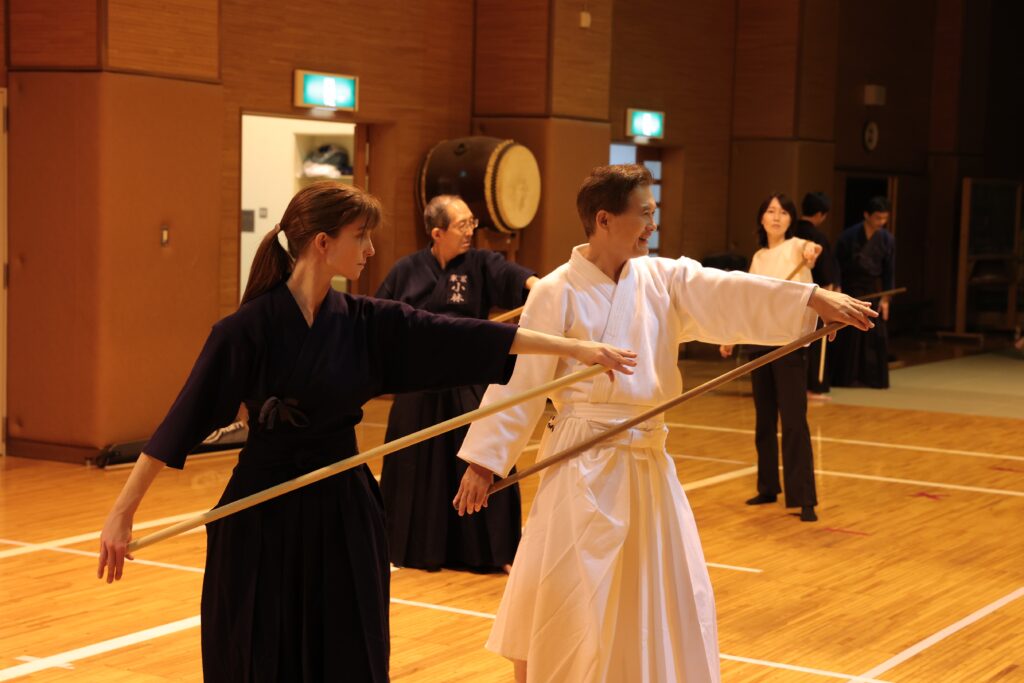
I was a kata taught called Tsukizue 着杖 step by step by Amano Shihan and found the movements were very dynamic. The variation and range of movement was very broad. From standing the jo in front of me like a walking stick, moving in a diagonal direction with the jo in one hand. Then holding with two hands and hitting the opponent holding a tachi. Holding each end of the jo, then putting it at my side.
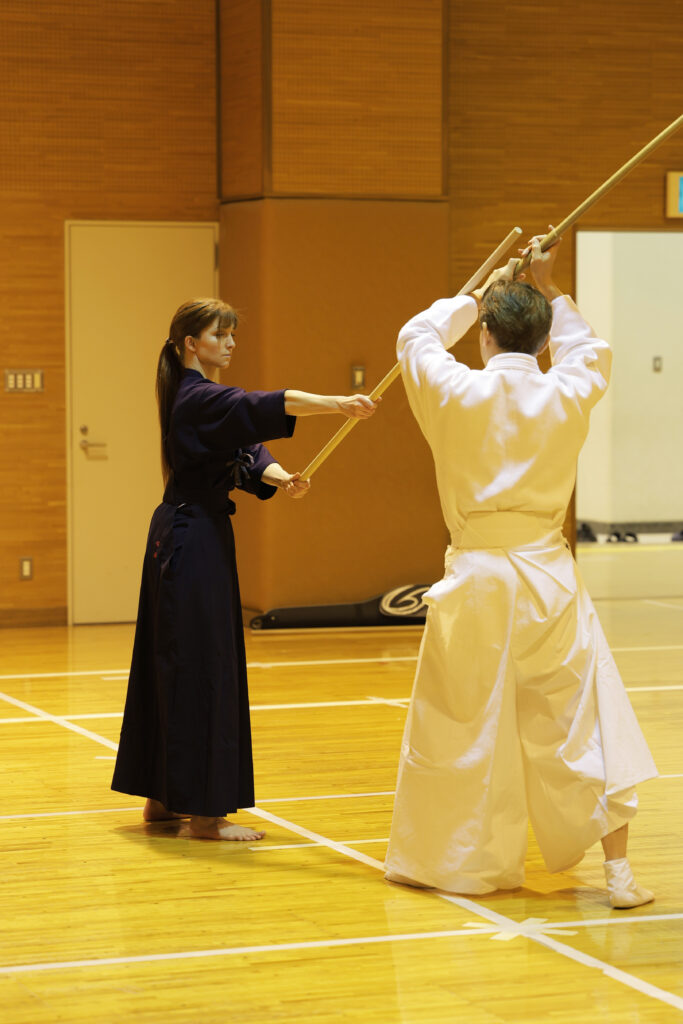
My image of jodo afterwards
After the training my overall opinion about jodo had changed quite a lot. Initially I saw the jo and its design as very straightforward and quite simple looking. As we are all taught its not a good idea to judge a book by its cover! After the training I realised the simple design aided in facilitation of the numerous variations of grip direction and grip height, not to mention movements or dosa that practitioners will perform during practice of their kata.
I came to understand that jodo practitioners have very good hand and leg coordination in order to correctly perform their kata. I was particularly impressed with the speed and dynamic nature of jodo. After watching the kata demonstrations I realised that the jo was a very versatile weapon. It could be used to strike like a sword, sweep like a naginata, and thrust like a spear. Unlike the single point of a sword, both ends if the jo can be utilised.
I was very impressed by the amount of knowledge and information that I received after just two hours training with Amano Shihan. As a first timer I came with an open mind but did not expect to be able to perform kata together with him, and am thankful for such a special experience. His way of explaining and teaching were very kind and at the same time he kept the ideas and concepts simple enough for a first timer such as myself to be able to properly engage in the training.
Amano Shihan took time to mention to everyone that people of any age, gender, body size and shape and fitness level can start jodo and that jodo practice will develop your mind-body coordination, posture and general fitness.
Joshin Kai holds free trial training sessions every spring and autumn. I was very glad to be able to participate in the spring training this time round. If you are even a little interested in jodo I highly recommend you try the ne1xt autumn training session. Be sure to confirm the dates and location on their website:
Thank you to Amano Shihan, Kobayashi san and all the members of the Joshin Kai at the practice.
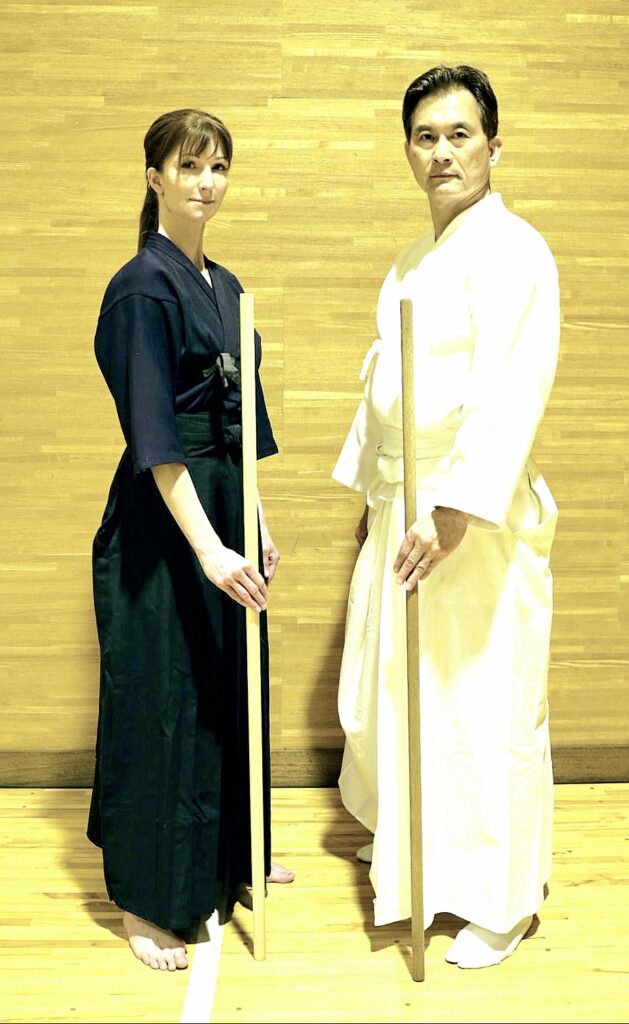
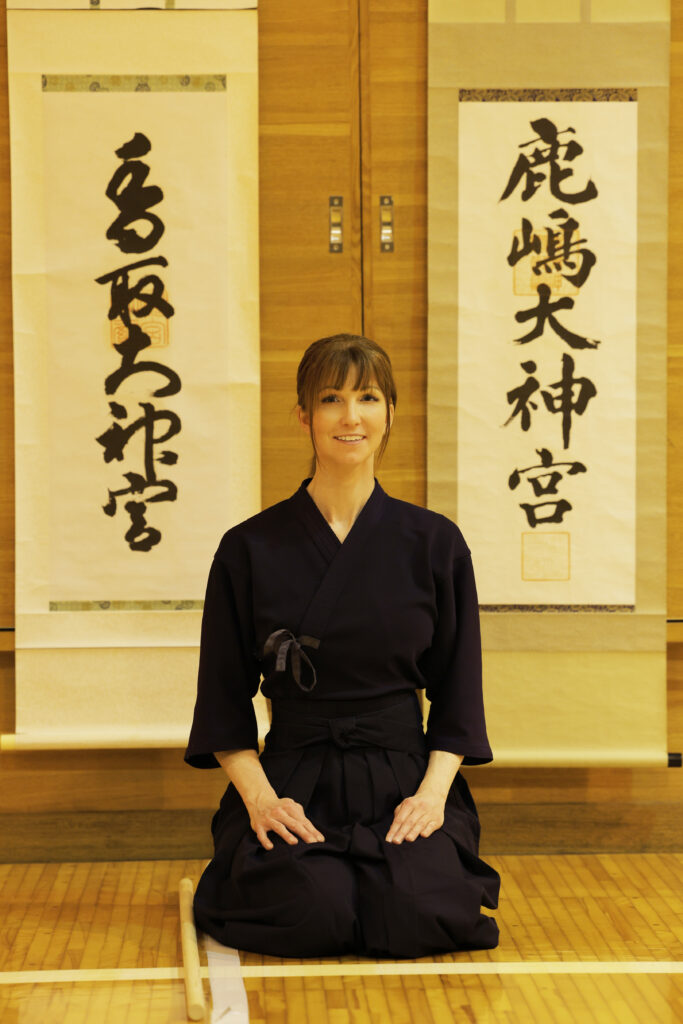
Shinto Muso Ryu Joshinkai
https://joshinkai.com/

